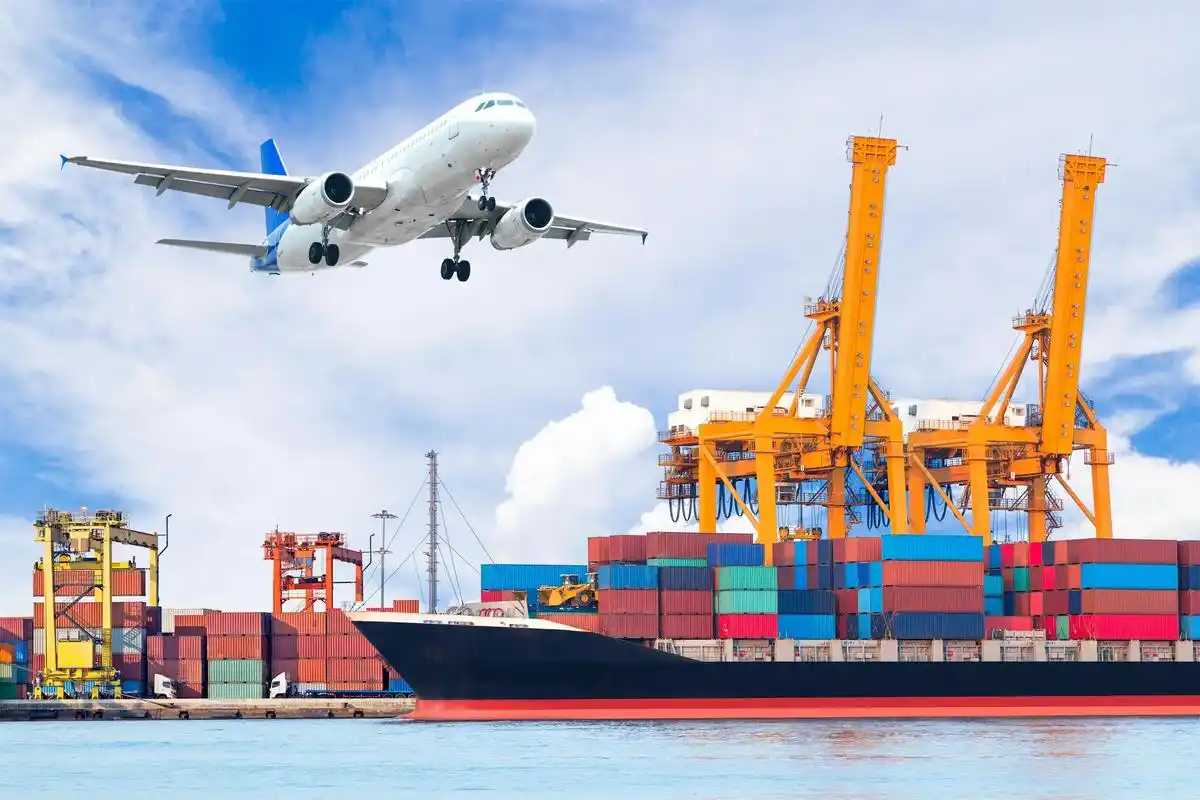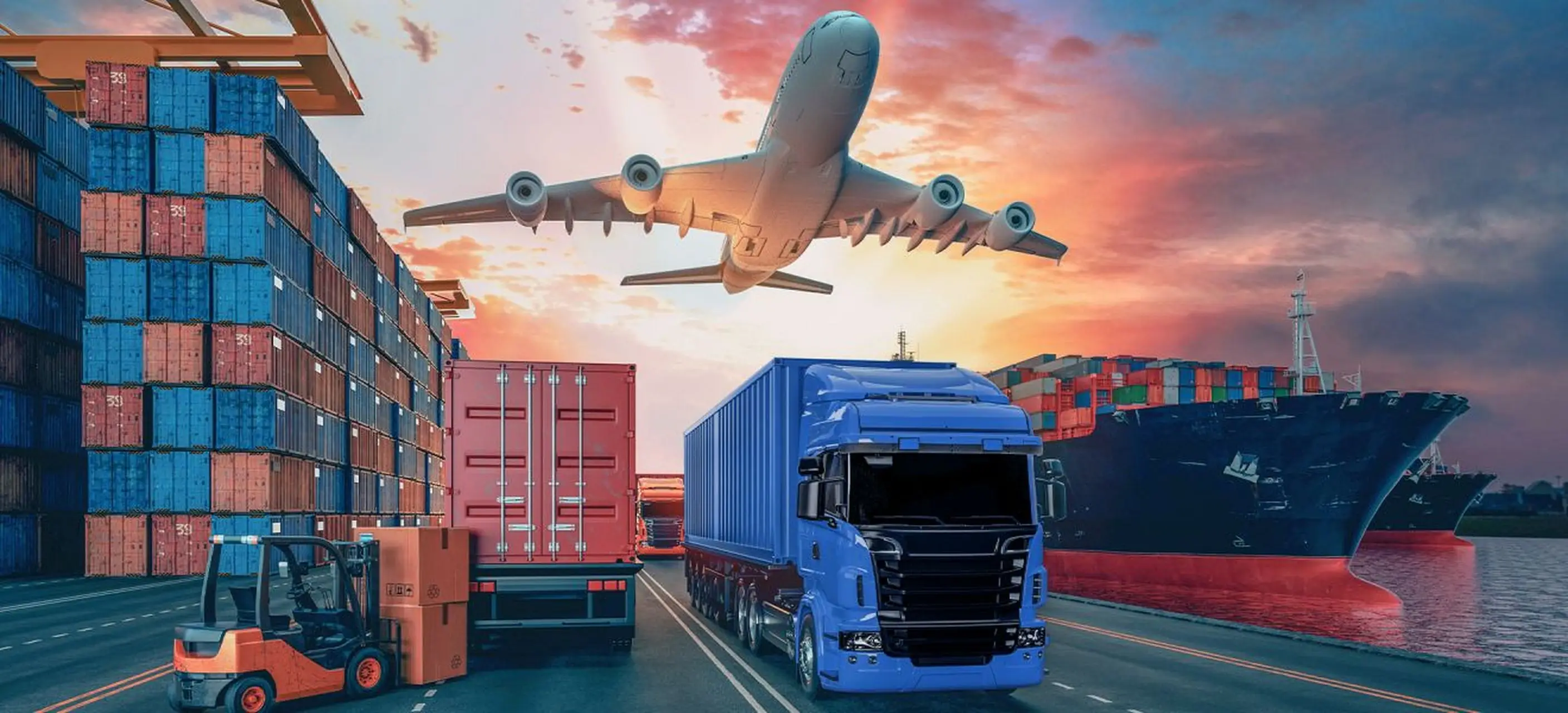Customs clearance is one of the most important stages in international trade exchange operations when you import goods into your country. The customs clearance process may seem complicated to you due to the multiplicity of necessary documents and documents, and the different customs laws from one country to another.
Therefore, in this article, we were keen to help you provide a comprehensive guide to customs clearance, starting with its procedures, passing through the types of customs duties and how to calculate them, and finally with tips that are the result of years of experience in international trade, to help you import safely and smoothly, so follow us.
What Is Customs Clearance?
Customs clearance is a mandatory part of the shipping process, enabling shippers to export and import goods to and from a country.
The customs clearance process can be divided into two stages:
- Export clearance: It is the process that is carried out before your imported goods leave the country of origin.
- Import clearance: It is the process that is carried out when your goods arrive at the ports of the destination country.
You can take a comprehensive look at customs clearance, starting from the exit of the goods from the place of the supplier until the receipt of the goods in your warehouses.

How to do customs clearance
First of all, I want you to take a quick look at the procedures and steps of customs clearance in general so that it gives you an overall idea of the procedures needed for clearance.
I have also seen the customs clearance process for the importer or exporter go through a number of steps, which are almost the same in all countries of the world, and the reason for this is due to the global trade agreements, which unified the procedures necessary for import and export.
Prepare customs clearance documents
Documents required for customs clearance include:
- Commercial invoice: details on the type, quantity, price, origin, etc. of the goods
- Packing list: details on the goods in each package.
- Bill of lading: a document issued by a shipping company to transport goods.
- Certificate of origin: a document that proves the origin of the goods.
- Insurance policy: a document that proves the insurance of the goods.
- Import and export license: a license required for certain special goods
Below I list the steps of customs clearance for the importer in more detail:
- When the containers arrive at the port, the containers begin to be unloaded, and one of the most important things that many overlook at this stage is that the importer, or his representative, must ensure that the goods are inside a single-door container equipped with a lock, and that the customs seal has been placed on it and that the stamp number is registered in the customs declaration.
- The customs broker contracted by the customer (importer) withdraws the customs delivery permit from the shipping agent “Maritime”.
- The customs broker submits the customs value declaration form based on the submitted invoices, as based on the invoices related to the shipment, the customs value is calculated.
- The goods are then inspected by the customs authorities by sending representatives to inspect and value the commodity, and in this step the safety of the shipment is ensured and the price of the goods is estimated. Some types of goods need to be disclosed through a specialized committee to assess the value of the goods, in which case the process may take some time.
- In the event that the goods need the approval of the exhibitors (regulatory authorities), a representative from customs takes a sample and sends it to the exhibitor.
- After that, the customs broker pays the value of the customs imposed on the shipment, as well as the expenses of detection and display if necessary.
- The final step is the customs broker contracting with an internal transport company. The goods are loaded, then pass through the detectors and then exit the port to the importer’s warehouses.
What does the customs clearance fee include?
Customs duties (customs tariff): They are taxes imposed by the customs authority on goods imported by the state from other countries and have several types.
Types of customs duties
1: In terms of its purpose
- Protection fees (dumping fees): They are fees imposed to combat the dumping of the market with foreign goods and support local goods, by imposing duties on imported goods, which increases their cost and thus their price in the market, these fees are very high and may exceed the price of the goods, which encourages local enterprises to increase their production and consumer preference for local goods.
Example: Dumping duties imposed by Saudi Arabia and the Gulf states on ceramics from China and India.
- Revenue duties: The aim of this type of fee is to increase government revenues by imposing customs duties on imported goods upon entering the country and they are in the form of percentages of the value of imported goods, and here the importance of invoices that show the value of the goods appears.
- Incentive fees (customs exemptions): They are customs exemptions for industrial inputs of a value, and they are one of the means of encouraging the establishment of industrial projects adopted by some countries, and they include customs exemptions on imports of the industrial project (industry inputs) such as machinery and equipment.
Some goods imported for personal purposes or for people with special needs also benefit from exemption fees.
Preferential duties: They are customs duties that fall under the preferential trade agreement, where a country concludes a deal with another country under which it agrees to impose taxes lower than the rate of taxes of other countries in order to encourage import and export movement between the two countries.
2: In terms of the method of calculation
- Customs duties by product type: It means customs duties on imported goods classified into a group or category of goods produced by a branch of a particular industry or industrial sector. Such as those imposed on power tools or cosmetics.
- Customs duties by weight, size or number: They are customs duties that are not related to the price of the goods, but to their weight, size, number, surface area, etc., and are a lump sum, such as imposing a tariff per 1 kg regardless of the value of the goods.
It is important to know the types of customs duties in the destination country from the official website of the Customs Authority, as you may benefit from exemptions such as those between the countries of the Cooperation Council for the States of the Gulf, or the fees on the type you import may be few, such as those imposed on electronic devices (the tax in many countries does not exceed 5% of the value of the goods).

How to calculate customs duties
Calculating customs duties and getting to know the laws of the customs system in the destination country is very important when studying the feasibility of importing, and to calculate these fees you must first get acquainted with a very important concept in the procedures for clearing goods from customs, which is the customs harmonized code “HS Code”.
First: Learn about the commodity code for your product HS code
The concept of commodity coding: It is a system used in the classification of products, by setting a special international code for each commodity used by all countries of the world for the same product, somewhat similar to the national number on the identity cards of individuals.
The importance of commodity coding:
- Simplifies the import process for exporters and importers.
- To know the clearance fees and documents required specifically for the imported product.
- It describes the entire product without having to know its name in the importing country.
Second: Know the rates of customs duties imposed in your country on the product you imported
You can use the simplyduty.com website
This site is one of the easiest and most accurate ways to calculate customs duties on any type of goods, all you need to do is:
- Access the site at the link here, and the following window will pop up in front of you:
- All you have to do is fill in the fields shown in this calculator from: the country of import, the importing country, the currency, the commodity code, and if you do not have it, mentioning the type of goods is enough, the unit value of the goods and their number.
- Click on the “Calcualte import duty$taxes” button and you will get the approximate value of duties and taxes.
Third: Make sure the cost of customs duties from the customs broker
It is also an easy way to ask the customs broker about the fees that will result from your goods, the previous site is very good, but it is possible that there have been developments and modifications regarding the fees and have not been updated on the site, the customs authority is constantly updated, and it is optimal to combine the two methods.
How to improve customs clearance efficiency
There are several tips to facilitate the customs clearance process that you can rely on:
- Choose a reliable supplier to ascertain, for example, their previous dealings with the destination country, their knowledge of the customs laws of that country, and ask about the experience of importers with them.
- Make sure that the supplier will provide you with the required documentsfor customs clearance before contracting the product, because any decrease in the required documents may lead to either fines that may exceed the price of the goods, seizure of the goods, or return them to the country from which they are imported.
- A reliable customs broker’s authorization, as your choice of broker is the one who ensures that the documents are complete and ready before the arrival of the shipment, which will help you choose the appropriate contract with the supplier, and that you benefit from his experience in facilitating customs clearance procedures.
- Calculating customs clearance costs is important when calculating feasibility, or you can ask the customs broker about the taxes imposed on the commodity you want to import, or as we mentioned above from sites dedicated to calculating customs duties.
- Follow the shipment during its journey from the supplier’s country until it arrives in your country to be ready the moment it arrives, and to avoid any surprises.
Common customs clearance issues
-
Incomplete documents
The lack of necessary customs clearance documents can lead to customs clearance delays or even detention of goods.
-
Tax calculation errors
Tax calculation errors can lead to additional costs and customs clearance delays. Make sure to accurately declare the value of the goods.
Customs inspection
Goods may be randomly inspected by customs. The inspection time and results may affect the speed of customs clearance.
Changes in regulations
Customs regulations in various countries may change at any time. It is necessary to keep abreast of and comply with the latest regulations.
Special goods
Certain goods such as food, medicines, chemicals, etc. require special licenses and additional inspections.
Customs clearance is an indispensable part of international trade. Understanding the process, fees and common problems of customs clearance will help importers and exporters to successfully complete the import and export of goods. By preparing complete documents, choosing a professional customs broker and maintaining good communication, you can effectively improve customs clearance efficiency and ensure smooth customs clearance of goods.









